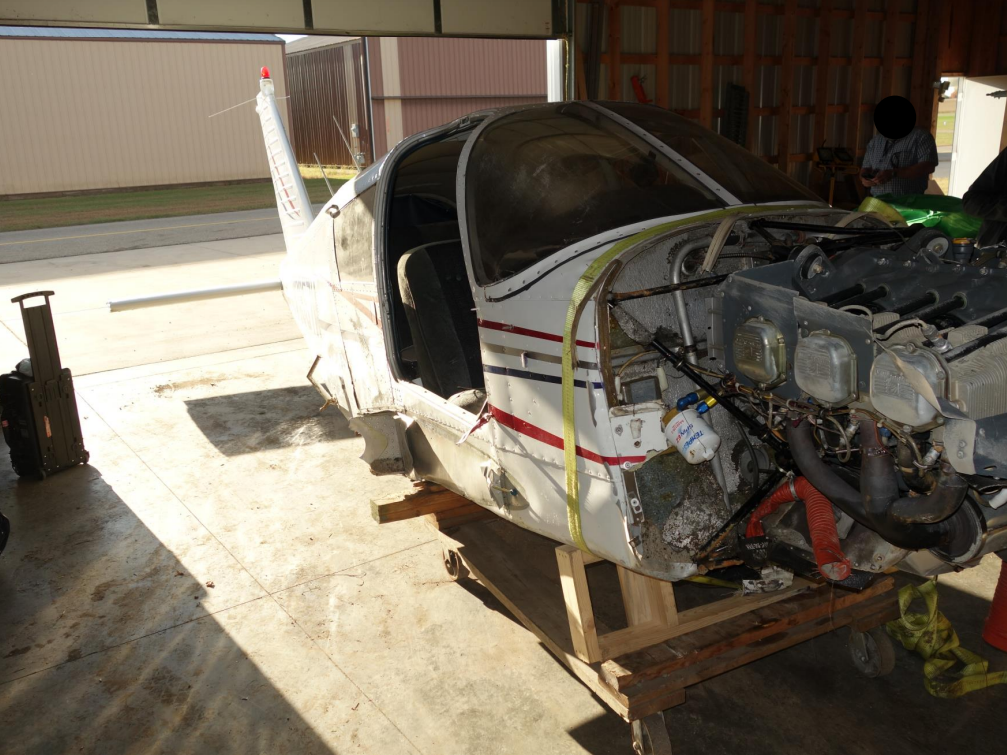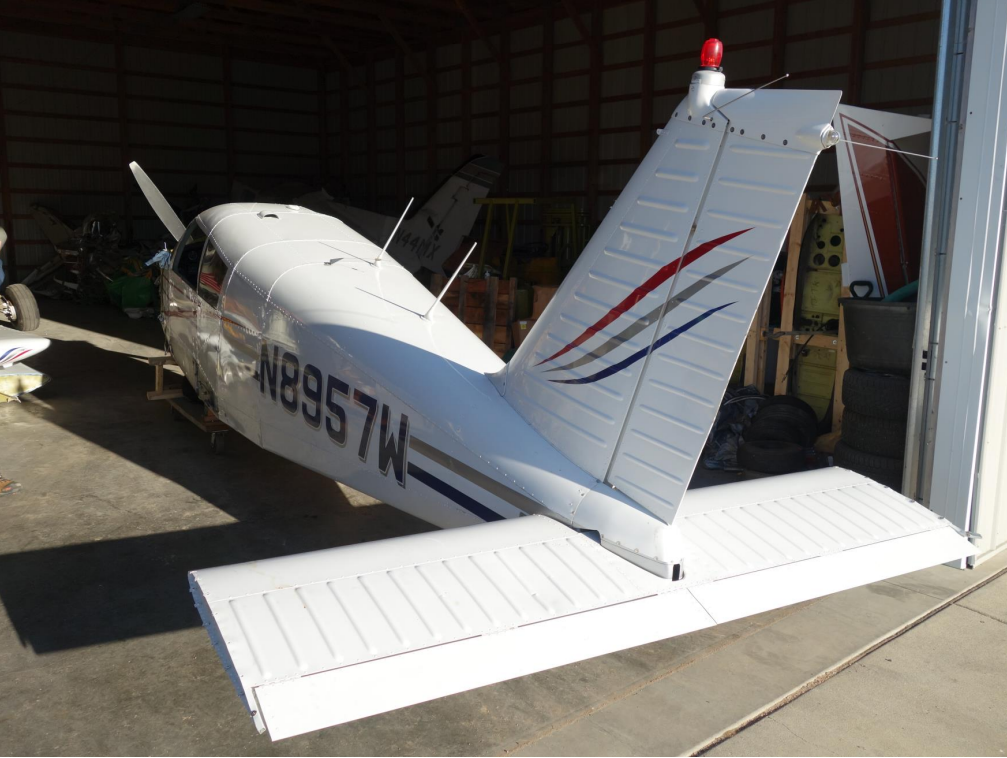
ASN Wikibase Occurrence # 240869
This information is added by users of ASN. Neither ASN nor the Flight Safety Foundation are responsible for the completeness or correctness of this information.
If you feel this information is incomplete or incorrect, you can submit corrected information.
| Date: | Tuesday 1 September 2020 |
| Time: | 20:07 |
| Type: |  Piper PA-28-235 Cherokee 235 |
| Owner/operator: | Private |
| Registration: | N8957W |
| MSN: | 28-10531 |
| Year of manufacture: | 1964 |
| Total airframe hrs: | 4733 hours |
| Engine model: | Lycoming O-540-B4B5 |
| Fatalities: | Fatalities: 1 / Occupants: 1 |
| Aircraft damage: | Destroyed |
| Category: | Accident |
| Location: | Walker, MN -
 United States of America United States of America
|
| Phase: | En route |
| Nature: | Private |
| Departure airport: | St. Cloud Municipal Airport, MN (STC/KSTC) |
| Bemidji Airport, MN (BJI/KBJI) | |
| Investigating agency: | NTSB |
| Confidence Rating: |
On September 1, 2020, about 2007 central daylight time, a Piper PA-28-235 airplane, N8957W, was substantially damaged when it was involved in an accident near Walker, Minnesota. The pilot was fatally injured. The airplane was operated as a Title 14 Code of Federal Regulations Part 91 personal flight.
The pilot was on the final leg of a cross-country flight at the time of the accident. A representative of the fixed base operator (FBO) reported that, during a fuel stop after the initial flight leg, the pilot landed without announcing his intentions over the radio. The pilot subsequently requested the airplane be fueled but remained in the airplane and stared straight ahead as it was being fueled. Afterward, the pilot exited the airplane and ate his lunch in the FBO conference room. He was offered a bottle of water but did not acknowledge.
During the second flight leg, air traffic controllers observed altitude and course deviations and noted slow radio responses that caused them to be concerned that the pilot was hypoxic or disoriented. They diverted the pilot to an intermediate airport and subsequently declared an emergency on the pilot’s behalf. He was met by emergency medical personnel but refused treatment. The pilot subsequently departed for the intended destination airport without refueling.
During the final flight leg, position data depicted the pilot altering course as the airplane approached a line of storms. He proceeded about 15 miles away from the storms but then abruptly reversed course toward the intended destination airport and again approached the line of storms. About 4 minutes before the accident and as the airplane continued to approach the line of storms, the pilot entered a descent from 7,000 ft, which appeared to continue until impact with the surface of a lake. The airplane came to rest in about 12 ft of water.
Post-recovery airframe and engine examinations did not reveal any anomalies consistent with a preimpact failure or malfunction. Based on the available information, the airplane flew about 4.5 hours since being fully fueled. However, due to submersion in the lake, no estimate could be made concerning the remaining fuel onboard at the time of the accident. Without additional data, whether fuel exhaustion occurred could not be determined.
The pilot was reportedly slow to respond during conversations, sleeping excessively, and seemed to have significant difficulty focusing in the weeks before the accident, which was noted to be unusual for the pilot. His autopsy revealed a previously undiagnosed brain tumor that had a compressive effect on his brain. Based on the autopsy findings and information about the pilot’s behavior on the day of the accident and during the preceding weeks, the pilot was likely impaired by effects of his brain tumor at the time of the accident.
The autopsy also identified two peripheral blood clots in the pilot’s left lung and blood clots in the deep veins of his left lower leg. Blood clots in deep leg veins may develop for a variety of reasons, including from slowed blood flow during prolonged sitting and from pro-clotting effects of cancer. However, whether symptoms from the blood clots contributed to the accident could not be determined from available information.
Probable Cause: The pilot’s impairment from the effects of an undiagnosed brain tumor.
Accident investigation:
 |
|
Sources:
https://www.natchezdemocrat.com/2020/09/02/local-veterinarian-pilot-killed-in-tuesday-airplane-crash/
NTSB
https://flightaware.com/live/flight/N8957W/history/20200901/1900Z/KIRK/KSTC
https://registry.faa.gov/aircraftinquiry/NNum_Results.aspx?NNumbertxt=N8957W
Location
Images:


Photos: NTSB
Media:
NTSB is investigating the Sept. 1 crash of a Piper PA-28 airplane in Walker, MN. NTSB is not traveling to the scene of the crash at this time.
— NTSB_Newsroom (@NTSB_Newsroom) September 2, 2020
Revision history:
| Date/time | Contributor | Updates |
|---|---|---|
| 03-Sep-2020 00:28 | Captain Adam | Added |
| 03-Sep-2020 02:24 | Geno | Updated [Time, Aircraft type, Registration, Cn, Operator, Total fatalities, Total occupants, Other fatalities, Phase, Nature, Departure airport, Destination airport, Source, Embed code, Narrative] |
| 23-Sep-2020 12:00 | ASN Update Bot | Updated [Operator, Departure airport, Destination airport, Source, Damage, Narrative] |
| 04-May-2021 18:46 | rvargast17 | Updated [Source, Damage] |
| 13-Oct-2022 02:15 | Captain Adam | Updated [Operator, Departure airport, Destination airport, Source, Narrative, Category, Accident report, Photo] |
| 13-Oct-2022 02:15 | Captain Adam | Updated [Photo] |
Corrections or additions? ... Edit this accident description
The Aviation Safety Network is an exclusive service provided by:


 ©2024 Flight Safety Foundation
©2024 Flight Safety Foundation